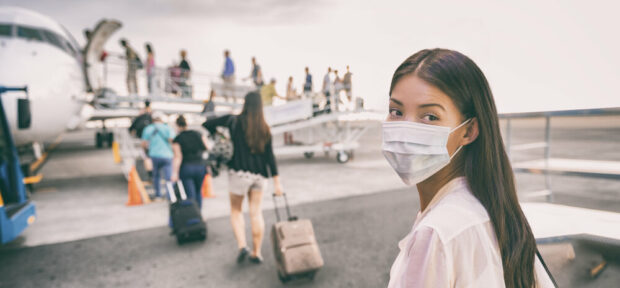How Travel Will Change After COVID-19
The COVID-19 pandemic has impacted almost everyone’s lives in some way or another. Whether you’re now working from home, helping your kids with online school or constantly trying to remember to grab your mask before you leave, life looks a lot different now than it did before. One thing that many people miss is going on vacation and traveling. With quarantine lists, travel bans and exposure risks, the idea of going anywhere far away is mostly out of the question.
However, this won’t last forever. Although travel will resume at some point, it will never fully go back to normal. Here are a few ways travel may look different post-pandemic.


More Safety Precautions
Just like when you go to stores or businesses, places will have mandatory face coverings and temperature checks. While day trips and domestic trips may not need as many safety precautions, if you’re going on a Puerto Vallarta cruise you may have to go through extra precautions to ensure everyone’s safety.
Experts also say you may need a certificate of immunity to enter certain areas in the future if vaccines become available. Your travels may need to have more of a purpose, such as business or a family emergency in order to travel in the more near future.
You may also be limited in where you go, depending on where cases are surging or slowing down. Some experts predict that there may be a need for countries to do off and on shutdowns to control the spread while still keeping the economy afloat.
Decreased Airline Travel
Airlines are a point of concern for many during this time. Although air travel is still an option right now, it has drastically reduced. Even after the pandemic is over, it is likely that people will still be wary to travel via airplane due to the close proximity to others for an extended period of time.
People may also have concerns over airplanes and airports being properly cleaned and sanitized due to the amount of people that come daily and the size of an airport. This also may deter people from using airplanes and have them reaching for their car keys instead.
Traveling in a car usually means being by yourself or around family or friends that you trust and know are not infected with COVID-19, making it a more reliable and safer option.
Domestic travel will be more prevalent than traveling to other countries, too, due to the extra precautions border patrols will take and possible bans on entering certain countries based on the COVID-19 cases in your area.
Increased Expenses
Not only will traveling itself become more expensive, but you will need to make new purchases before a trip.
If you weren’t already investing in traveler’s insurance, you may do it more often now due to the constantly-changing restrictions and guidelines for COVID-19. You may also need to purchase more personal protective equipment and cleaning and sanitization products.
Many experts fear that less travel abroad will increase international traveling prices. Airlines could charge more because they will not be at full-capacity; cities that rely on tourism for their economy may increase prices for restaurants and bars to make up for the lack of travelers.
Fewer Crowds
There will be fewer crowds, even in very popular tourist attractions. Places like parks and museums that are usually tourist-magnets will have smaller, more controlled crowds and may even have time limits and staggered arrival times to keep the crowds moving.
Many amusement parks have already announced changes to the way their parks operate, such as online reservation systems and ending fireworks shows and parades for the time being.
COVID-19 has changed the way that many businesses and companies operate, which will affect travel. However, that doesn’t mean that traveling will never been an option again. As long as you are willing to follow new safety precautions, traveling post-pandemic will be a viable option like it once was.